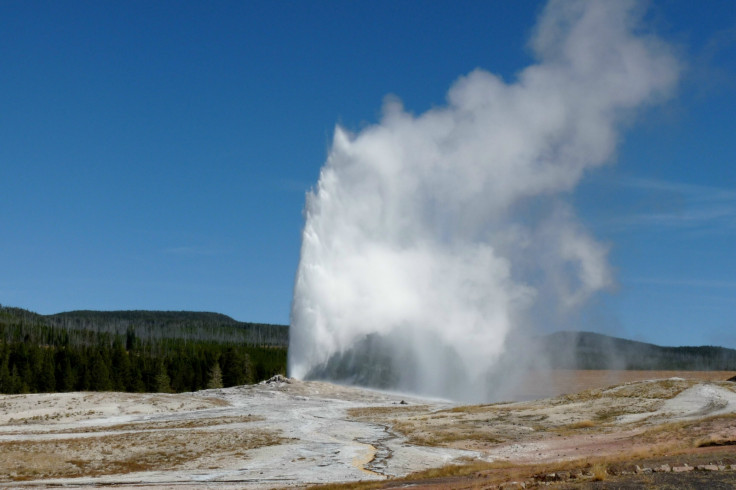Yellowstone's geyser Old Faithful erupts regularly 'because of loops in its plumbing'

Geysers erupt at regular intervals because of loops in their underground plumbing systems, volcanologists have said.
Old Faithful in Yellowstone National Park erupts every at intervals of between 35 to 120 minutes without fail. It is one of the most predictable geographical features on Earth, spewing water and steam into the air every 91 minutes on average.
Scientists from the University of California, Berkeley, have found Old Faithful and other geysers erupt periodically because of loops or side chambers beneath them.
There are about 1,000 geysers in the world, all of which are in active or formally active volcanic areas. Half of them are found in Yellowstone. Water from the surface moves down and gets heated by hot magma, causing it to rise to the surface in the form of hot springs, mud pots and geysers.
Researchers say that geysers have bends or loops traps the steam then bubbles it out to slowly heat the water column above until it is just about to boil.
Eventually, the steam triggers a sudden boiling from the top of the column, releasing pressure on the water below and allowing it to boil too – the column boils from top down, the researchers say.
Study author Michael Manga looked at geysers in the Atacama Desert in Chile and Yellowstone along with laboratory experiments to try to work out why these springs take place with such regularity.
He said at many geysers it appears there is a cavity off to the side where steam accumulates.
"Most geysers appear to have a bubble trap accumulating the steam injected from below, and the release of the steam from the trap gets the geyser ready to erupt," he explained. "You can see the water column warming up and warming up until enough water reaches the boiling point that, once the top layer begins to boil, the boiling becomes self-perpetuating."
Publishing their findings in the Journal of Volcanology and Geothermal Research, the team recreated a geyser eruption that erupted periodically like those in Yellowstone.
Manga said that since their discovery in 1846, a few researchers have put cameras into geysers and seen features that look like loops or chambers where steam bubbles could be trapped.
His team fed temperature and pressure sensors about 30ft into geysers and correlated the measurements with those found above ground from seismic sensors to work out the sequence of events underground that lead to eruptions.
Over the coming years, Manga said he hopes apply his understanding of geysers to volcanoes to work out their internal mechanics.
In the meantime, he said they are just looking to find out more about these springs. "One of our goals is to figure out why geysers exist – why don't you just get a hot spring – and what is it that controls how a geyser erupts, including weather and earthquakes."
© Copyright IBTimes 2025. All rights reserved.






















